Many collectors consider their work is done at the point where they first admire a newly acquired piece hanging on a wall, positioned on a plinth or played on a screen. For American-born, Ghana-based collector Nish McCree, this is the very moment her work begins. ‘For me, collecting art is more about the engagement,’ she says. ‘It is more important to be involved with the art ecosystem than just collecting beautiful objects.’
For the past decade, McCree has collected work by artists based in Africa and from the continent’s diaspora. She has amassed a collection of more than 80 pieces that includes figurative painting, portraits, collages, masks and abstract works from emerging and mid-market African artists. Her collection is currently housed at her home in Accra and its spirit also lives virtually on her newly launched digital platform, the Cowrie Culture, where McCree provides education and professional development support to artists, collectors and cultural workers in the arts in Africa. In this way, the focus of McCree’s collection is not an -ism, a particular trope or a theme, but rather action – the doing, the advocacy, the supporting that comes with acquiring an artwork.
McCree was born in the American South, in Citronelle, Alabama, where as a child she would marvel at how her grandmother, an avid collector and maker, would synthesise folk art, jewellery and antique collectables in her home. McCree learned from her grandmother that ‘even making jam or making quilts’ was a way to bind people together, fostering community and a shared identity. These traditional art forms helped her to understand how engaging with art involves intimacy and coming together. Living with these objects helped her appreciate how aesthetics can shape a life.
Some of the earliest pieces she bought were paintings by the Washington, D.C.-based abstract artist Rushern Baker IV in 2015. She went to his studio and was so excited by his work that she bought two on the spot. McCree was intrigued by the artist explaining that his works were an ode to African American artist Sam Gilliam, the abstract colour-field painter associated with the 1950s Washington Color School. Through Baker’s intense scrutiny and study of Gilliam’s work, McCree felt she was purchasing a piece of African American art history. In turn, she knew that as a collector she could also play her part in telling the story of African American art by supporting younger artists.
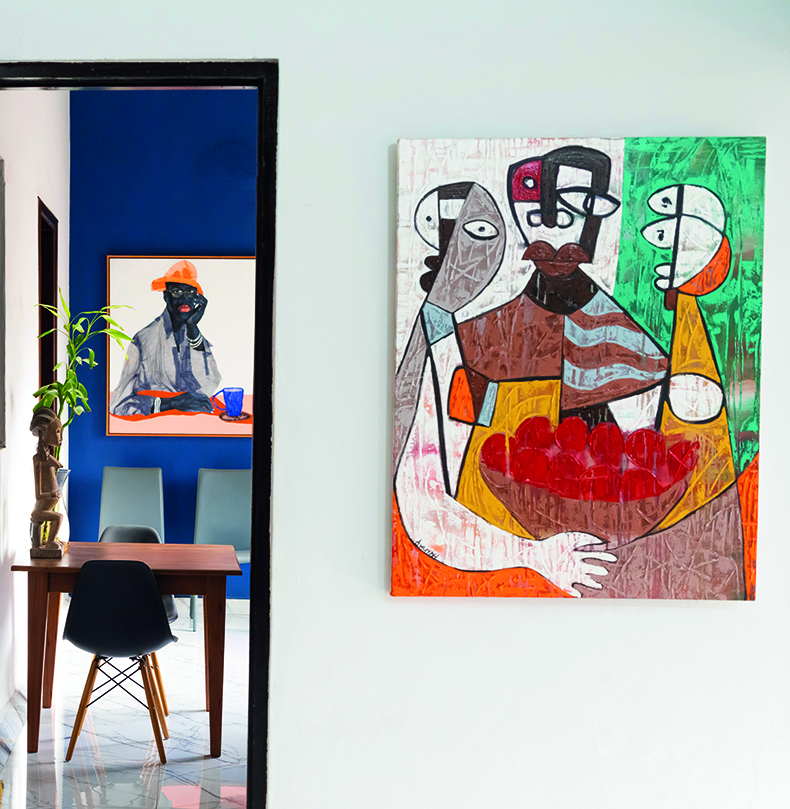
Eric Adjei Tawiah’s Coffeeshop, 2020, hangs in the breakfast nook. In the foreground is Kofi Awuyah’s Gift from the Harvest 1, 2019. Photo: Michael Aboya
She had a burning desire to live and work in Africa. ‘This had been a dream I wanted to come true ever since I was a little girl.’ Eventually, she realised this goal when she moved to Tanzania in 2008 for a decade. She later moved to her current home in Accra, where she advises on international development for the United Nations. When she made Africa her home, she realised that ‘collecting for collecting’s sake was not enough any more.’
Around this time, in 2018, she started collecting alongside her husband, Ofotsu Tetteh-Kujorjie. Through her research and investigations into new artists she ‘saw so many ways that she could engage with the artist as an informal mentor and patron. People do not necessarily realise that $1,000 could go a long way to help support an artist here.’
This mission-driven collecting process and conviction led her to some important successes. ‘I remember when I first came across Amoako Boafo’s work years ago, I felt so compelled to try my best to get those works.’ This was in 2018, before Boafo’s first major solo exhibition with Roberts Projects in Los Angeles and before any accolades and fame. When McCree met the artist, he did not even have a gallery. ‘There was something so special about his early works,’ she says, ‘that really felt like “us” – a portraiture and style I had not seen before.’
Her successful track record with extraordinary artists for the longest time led her to think she had ‘a magic eye’. In addition to luck, she comes across artists for her collection via more conventional channels such as Instagram, art periodicals, speaking to other collectors and, most significantly, recommendations from artists. McCree does not have a formal adviser, but there are a few in her network for friendly, anoraky chats. Her rules of engagement are designed to build a bond with each artist: ‘I take the time to really develop the relationships, follow the progress, understand the narrative and what the artist is trying to do with their practice.’ For instance, she is a devotee of new artists such as Tjaša Rener, a Slovenian figurative painter who has lived and worked in Ghana for a decade and is the newest artist McCree has added to her collection. She ‘has this way to interpret figurative painting in a childlike, whimsical essence, but not forced in to a formality.’
Even on the Cowrie Culture, she exhibits artists that she might have known for years. The first exhibition she held in Accra, in 2021, was dedicated to the work of Michael Aboya – ‘somebody I believe in so much […] he is a brilliant young photographer who is also the Adobe ambassador for all of Africa.’ Every work comes with a small poem and is exquisitely intimate. ‘Even on the continent,’ McCree says, ‘a lot of people don’t know what a gem he is.’
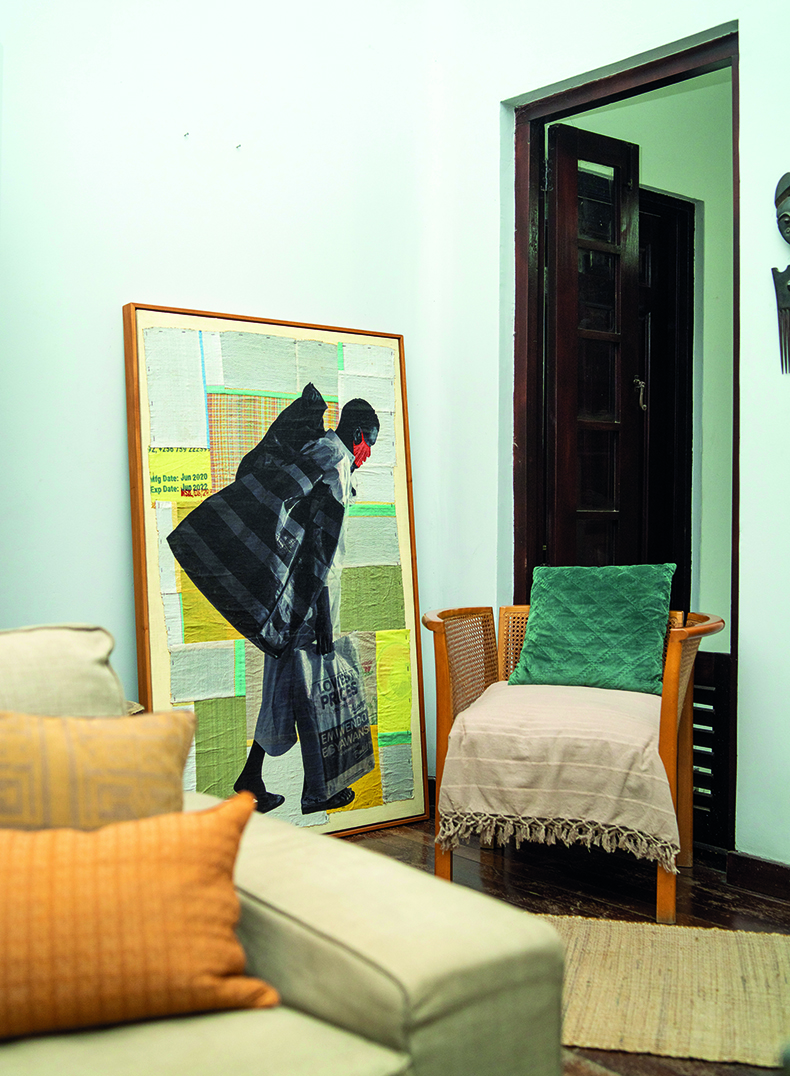
A work from Collin Sekajugo’s C’est l’Ouganda series, 2020, hangs in the living room. Sekajugo will be part of the Uganda Pavilion at the Venice Biennale 2022. Photo: Michael Aboya
McCree believes it is vital to collect her own generation because contemporary artists ‘reflect our times back to us’. The immediacy and the freshness is important. ‘In 20 years we will look back at the works from this period, and see that we were at a turning point.’ For instance, a newer work by multimedia artist Collin Sekajugo incorporates an image of a mask from the Covid pandemic. It was recently announced that Sekajugo will represent Uganda in the country’s first ever pavilion at the Venice Biennale in April 2022. ‘I was so touched when they called me to tell me the news, because he was one of my early artists I purchased when I moved to Ghana. I feel so proud of what he’s achieved and where his career is going.’
It is not always record-smashing artists and art-world surprise hits that McCree is looking for. Recently, she bought a small miniature Benin head because she has become more interested in historical art made in Africa. ‘There is more to explore with the traditional […] the timeline and history. You have to know what happened before you get to what’s happening to you now.’ These older works are important when piecing together the history of African art, because ‘so much of the art from our continent goes outside the continent. We don’t have a large collector base in many African countries. Some markets are different, such as Nigeria and South Africa, but in Ghana we have had this huge boom of contemporary Ghanaian artists in the past five to seven years and none of it has stayed here.’
McCree believes the older West African pieces that she’s started adding to her collection – which include a 19th-century Akuaba fertility figure, and a D’mba shoulder mask and a Bansonyi figure of a snake, both made by the Guinean Baga people – are significant for seeing the contemporary because they anchor the new work, tying it to a tradition and a history that mean contemporary works are not seen as being merely ornamental. The ‘more you look at older pieces, doors open up and you see things you haven’t seen. You see the past reflected in the contemporary, and even vice versa. I keep waiting for somebody to acknowledge this.’ The older pieces are her attempt at balancing out these ideas of ‘what a more interesting art collection can be. If I had to tell a story of a period of time with a collection, how many gaps do I have and what would it take to fill those gaps with some more significant pieces from the modern art movement – modern art from Africa.’
McCree’s project is not just about relating work to the past. One of the artists in her collection is Elolo Bosoka, a doctoral student in the department of painting and sculpture at KNUST in Kumasi, Ghana, who has been recently shown at 1:54 Contemporary African Art Fair in London and was a standout at a solo display at Christie’s in 2021. Bosoka plays with materiality, the found object and how the mundane can be transformed into abstract sculptural and architectural pieces. McCree says, ‘he’s turning this notion of figuration on its side and showing us how we need to engage with commonplace objects that we live with and see them in a different light as contributing to our human stories.’ She predicts that Bosoka will be a professor in Ghana one day. ‘He can write critical and scholarly pieces. It’s important for other artists to see that depth from one of their peers.’
This critical discourse around the contemporary art boom is essential to creating the art ecosystem in Africa that McCree so adamantly encourages. ‘As an ecosystem we have a huge challenge with what Sarah Elizabeth Lewis says is the “over-exhibiting of works and under-theorising of works.”’ She believes it is vital to redress this problem. ‘If you’re not being written about or included in artistic criticism, it’s hard to see how your work will be sustainable in the future. We need more of a developed ecosystem that has to include writers, art historians, curators and professional development opportunities and a robust collector base to bolster the artists’ work.’
By basing herself and building her collection in Ghana, McCree wanted to translate the tradition of collecting into an act of engagement and show what contemporary art means for a society. ‘Art is a way to inform economic growth and entrepreneurship. We are a continent of young people, and the government can’t give everybody a job, so the creative economy at large and contemporary art can play a part in that prosperity.’ Her collecting practice complements her outlook on international development: ‘People can thrive in the arts sector, and they can do that with creativity and purpose in an area they are already naturally drawn to. This advocacy is at the heart of what I do as a collector.’
These art investigations have allowed McCree to see first-hand the challenges and opportunities that artists face. For instance, there are continuing issues around the lack of exhibition spaces and ability to physically share work. However, her engagement and patronage as a collector has also led her to see positive changes in the art world: ‘Seeing young adults in Ghana get excited enough to do the research and start formal engagement in the art world as advisers, as dealers, is exciting, as is seeing artists helping other artists share resources. One of our very young adult-led artist collectives started in 2017 and they are now launching a collaboration with Phillips. It’s encouraging for me to see how it can lead to economic growth and social development for young entrepreneurs and artists – I love that.’
Although she hasn’t formally shown her collection, the future vision for the collection includes sharing with a wider public. McCree wants the collection to be used for scholarship and academic enquiry, perhaps as part of a cultural centre or budding academic space. ‘It can help others to learn about art or form a curriculum for contemporary art. Can you imagine this architecturally astounding facility with a green-space sculpture garden, children’s cultural centre and this idea of artists engaging with academic centre and space, and you put it all there?’ There is certainly established Ghanaian talent that could help design this fantasy space: David Adjaye, for instance, or Ibrahim Mahama. It would be as grand and ambitious as the mission-led collection it would house.
To McCree, this grandeur is a necessity. ‘We need to do things in an extraordinary way because in Africa, we are constantly modelling possibilities and modelling what it means to step out with audacity – and to do that in a way that is stunning and world-class, because we have so many other narratives surrounding us on this continent that don’t show what else is going on.’ McCree is collecting with a purpose; her ability to find talent before it hits the mainstream art world is extraordinary, but so is her conviction that her collecting must be executed ‘with grandeur’.
From the March 2022 issue of Apollo. Preview and subscribe here.
Unlimited access from just $16 every 3 months
Subscribe to get unlimited and exclusive access to the top art stories, interviews and exhibition reviews.

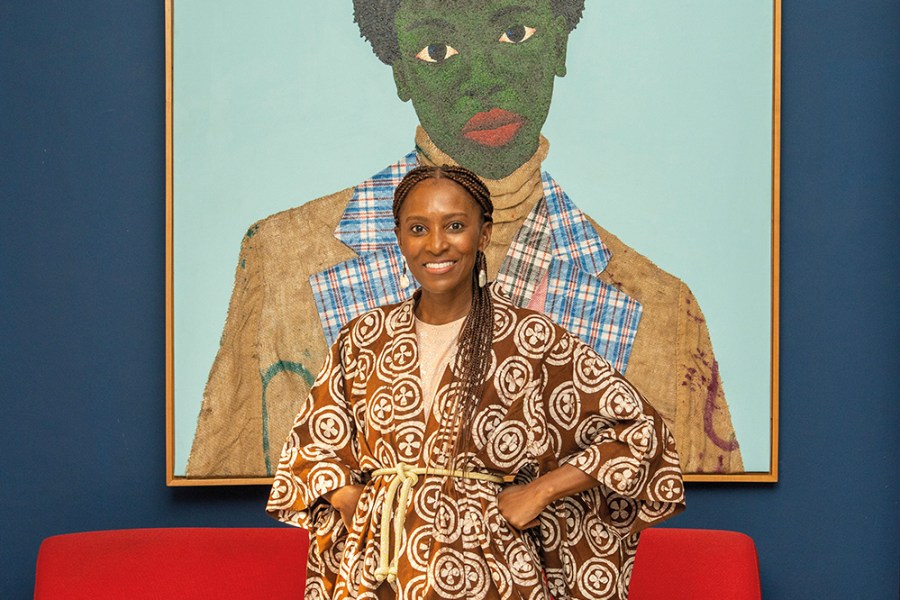
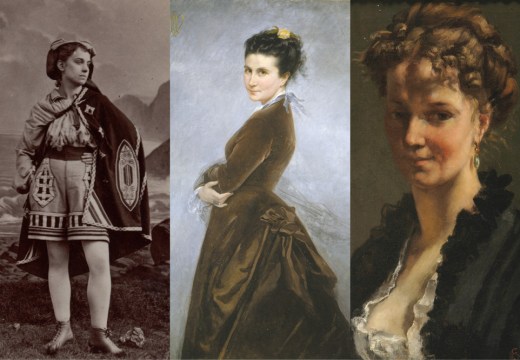
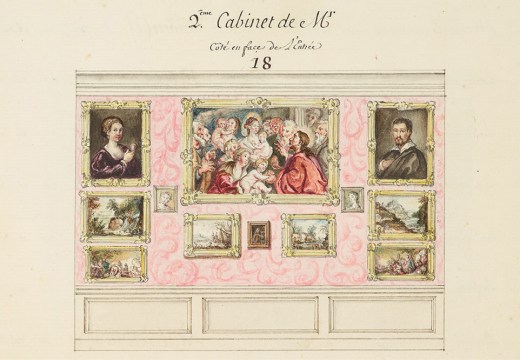
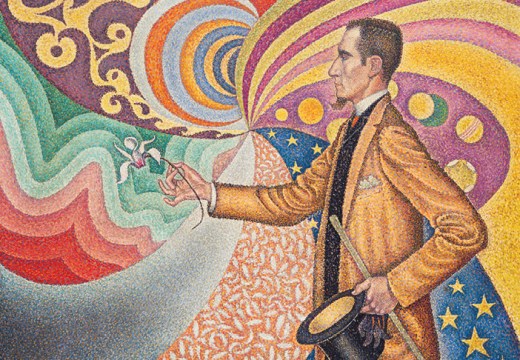









![Masterpiece [Re]discovery 2022. Photo: Ben Fisher Photography, courtesy of Masterpiece London](http://www.apollo-magazine.com/wp-content/uploads/2022/07/MPL2022_4263.jpg)
It’s time for the government of London to return to its rightful home